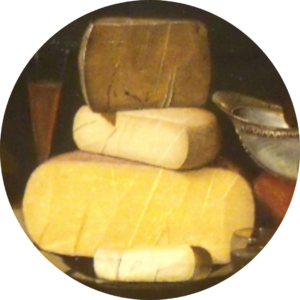In the late 1700s Spanish missionaries brought grapevines to the California. Since then its diverse landscapes, favourable climate, and innovation have made a global powerhouse in the production of Chardonnay wine.
Tasting Notes
| Body | Medium to full body. Cooler clime higher acidity, warmer can be moderate |
| Grape flavours | Depending on regions- Citrus: Lemon, lime, and grapefruit notes are common in cooler regions. Orchard Fruit: ranging from crisp green apples to ripe, baked pears. Stone Fruit: Peach, apricot Tropical Fruit: Warmer regions pineapple, mango, banana |
| Winemaker interventions | Oak Flavouring: vanilla, butterscotch, toasted oak Malolactic Conversion: creamy texture, reduces the perception of acidity, buttery and dairy notes Lees Aging: emphasises richness, creaminess, and complexity |
| Aging | Depending on regions- – hazelnut, almond, brioche, and honey – caramel, toffee, and nutmeg – mineral nuances, wet stones or flint |
Californian Chardonnay, as popular as sunshine
After the repeal of Prohibition in 1933, the California wine industry started to rebuild and Chardonnay grapes were planted in the Napa Valley and Sonoma County. Early examples were usually sweet and simple, but in the 1960s, winemakers began experimenting with oak aging. From here oaked Chardonnay became the style that California would become known for.
Rise of Napa Valley and Sonoma County (1970s – 1980s):
1976 marked a turning point when wineries like Chateau Montelena and Stag’s Leap Wine Cellars triumphed at the “Judgment of Paris,” in an unprecedented and completely unexpected a blind tasting against French wines. It took Californian Chardonnay onto the global stage. Napa Valley and Sonoma County emerged as key regions for Chardonnay production during this era.
Californian Regions
Various regions and appellations became known for their unique Chardonnay expressions.
- Napa Valley: full-bodied cool climate Chardonnays, often aged in new French oak barrels.
- Sonoma County: a wide range of styles, from crisp and mineral-driven Chardonnays in the Russian River Valley to more voluptuous and oak-driven wines in Sonoma Coast.
- Central Coast: Regions like Santa Lucia Highlands and Santa Maria Valley produce Chardonnays with bright acidity and complex flavours.
- Monterey County: a cool climate with citrusy notes and a crisp profile.
- Santa Barbara County: Chardonnays with balanced ripe fruit and acidity. Santa Rita Hills AVA is particularly known for Burgundian-style Chardonnays.
- Mendocino County: Known for producing Chardonnays with a focus on elegance and minerality.
Tasting Notes for Californian Chardonnay:
Californian winemakers use all the options at their disposal to bring more flavour to chardonnay wines. It can make Californian Chardonnay very difficult to generalise about, but here we go-
- Body: Medium to full body. Cooler clime have higher zesty acidity, while warmer can be moderate and smooth. Moderate high alcohol, usually dry
- Grape Flavours: The spectrum can be broad
- Citrus: Lemon, lime, and grapefruit notes are common in cooler regions.
- Orchard Fruit: Apple and pear flavours are prevalent, ranging from crisp green apples to ripe, baked pears.
- Stone Fruit: Peach and apricot aromas can also be present.
- Tropical Fruit: Warmer regions may yield pineapple, mango, and banana notes.
- Winemaker techniques:
- Oak Flavouring: French oak is a hallmark of Californian Chardonnay, giving vanilla, butterscotch, and toasted oak, adding complexity and creaminess to the wine. Winemakers often use French oak barrels, which contribute more subtle flavours. American oak imparts a stronger oak influence.
- Malolactic Conversion: Many Californian Chardonnays undergo malolactic fermentation (MLF), converting sharp malic acid into smoother lactic acid. This gives a creamy texture, reduces the perception of acidity and introduces buttery and dairy notes
- Lees Aging: another common practice, it can emphasise richness, creaminess, and complexity, sometimes giving a bready or brioche note
- Aging: Aged Californian Chardonnay can age well. Depending on the terroir, further notes include
- hazelnut, almond, brioche, and honey
- caramel, toffee, and nutmeg
- mineral nuances, wet stones or flint
How Californian Chardonnay varies to other prominent regions
Californian Chardonnay stands out. Here’s how the taste of Californian Chardonnay varies from other notable interpretations, such as Burgundian Chardonnay, Australian Chardonnay, and New Zealand Chardonnay:
Differentiating characteristics of Californian Chardonnay:
- Climate and Terroir: California’s diverse climate zones and terroirs contribute to a wide range of Chardonnay styles. Coastal areas like Sonoma Coast and Santa Barbara County offer cooler temperatures, resulting in wines with higher acidity, citrusy notes, and vibrant fruit flavors. In contrast, Napa Valley produces Chardonnays with more warmth and opulence, featuring ripe orchard fruit and buttery richness.
- Oak Aging: Californian Chardonnays are often associated with oak aging. Winemakers use both French and American oak barrels, which impart varying degrees of vanilla, toasty, and butterscotch notes. This oak influence can be more pronounced than in some other regions.
- Malolactic Conversion: Many Californian Chardonnays undergo malolactic fermentation, giving them a creamy texture and introducing buttery and dairy notes. This process can soften the wine’s acidity and create a lush mouthfeel.
France: Burgundian Chardonnay (Bourgogne, France):
- Climate and Terroir: Burgundy’s continental climate and limestone-rich soils produce Chardonnays with excellent minerality, precision, and a strong sense of place. These wines often exhibit more pronounced acidity and subtle fruit flavors like green apple and lemon.
- Oak Aging: While Burgundian Chardonnays also see oak aging, the style tends to be more restrained and focused on showcasing the vineyard’s terroir. French oak is the preferred choice, offering delicate spice and vanilla nuances.
- Malolactic Conversion: Malolactic fermentation is less common in Burgundy, resulting in wines that maintain higher acidity and a leaner, more mineral-driven profile.
Australian Chardonnay (Various Regions):
- Climate and Terroir: Australia’s diverse regions yield Chardonnays with varying styles. Cooler climates like Margaret River produce Chardonnays with bright acidity and citrusy notes, while warmer regions like Barossa Valley and Hunter Valley produce richer, fuller-bodied wines with tropical fruit flavours.
- Oak Aging: Australian Chardonnays can also feature oak aging, but the use of oak is more balanced, allowing fruit character to shine through. French oak barrels are commonly employed for a subtler oak influence.
- Malolactic Conversion: Some Australian Chardonnays undergo malolactic fermentation, adding creaminess and complexity, but this practice is not as widespread as in California.
New Zealand Chardonnay (Marlborough and Hawke’s Bay):
- Climate and Terroir: New Zealand’s cooler maritime climate, particularly in regions like Marlborough, results in Chardonnays with crisp acidity, vibrant citrus, and green apple flavours. Hawke’s Bay, with a slightly warmer climate, produces Chardonnays with riper fruit notes.
- Oak Aging: New Zealand Chardonnays may see oak aging, but the focus is on preserving the wine’s freshness and purity. The use of oak is generally more restrained, with a preference for French oak.
- Malolactic Conversion: Malolactic fermentation is practiced selectively in New Zealand, with winemakers aiming to balance the wine’s acidity while preserving its natural vibrancy.
World leading expressions
Californian Chardonnay is a world to itself. Don’t pre-judge, explore for yourself.


